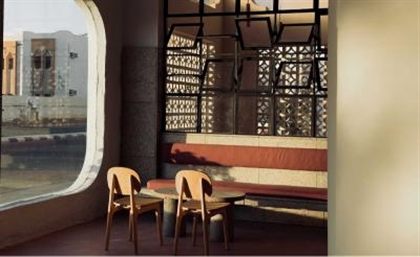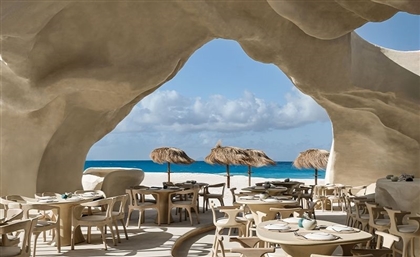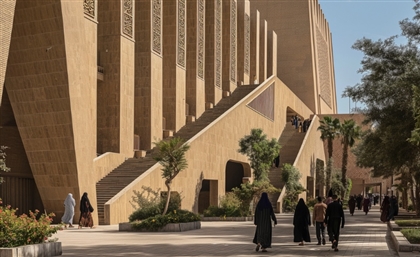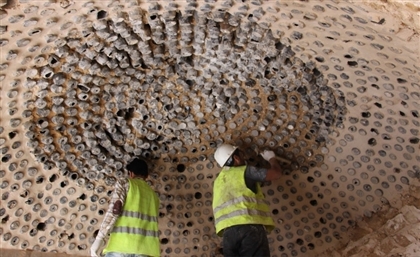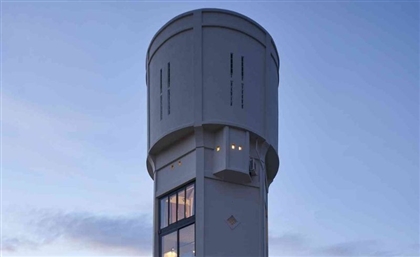How Khufu’s Restaurant Caters to Modern Appetites at the Giza Pyramids
We take a close look inside Khufu’s subtle design and how it sets the stage for a contemporary reconceptualisation of Egypt's culinary experiences.
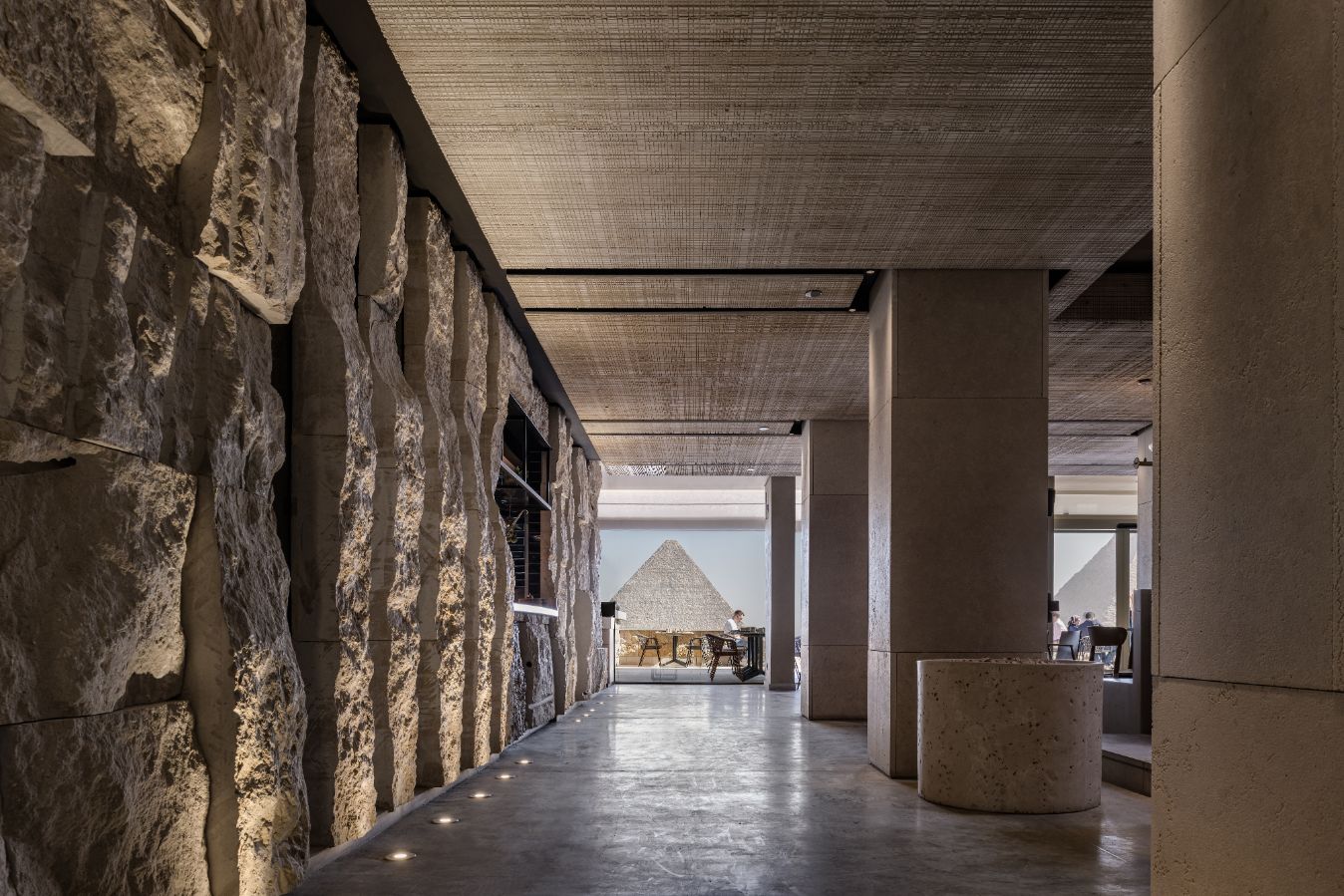
The Great Pyramids of Giza is no mere backdrop, or symbol, or postcard picture on which the phrase ‘Wish you were here’ is emblazoned in scarlet letters. The landmark is a physical testament to the endurance of Egyptian culture and history, a series of monuments that have resonated with countless Egyptians, tourists and researchers across millennia. To build a destination in its vicinity is to humble oneself before the kings and queens of ancient Egypt. When Hisham Ghorab, founder of Style Design, was tapped to draw the plans for Khufu’s, a contemporary Egyptian restaurant that would elevate the dining experience for visitors to the Giza plateau, he knew it would be impossible to outdo - or even match - the splendour of the pyramids. Instead, Ghorab needed to lean on the art of understated elegance to deliver the transcendental atmosphere that was required of him.
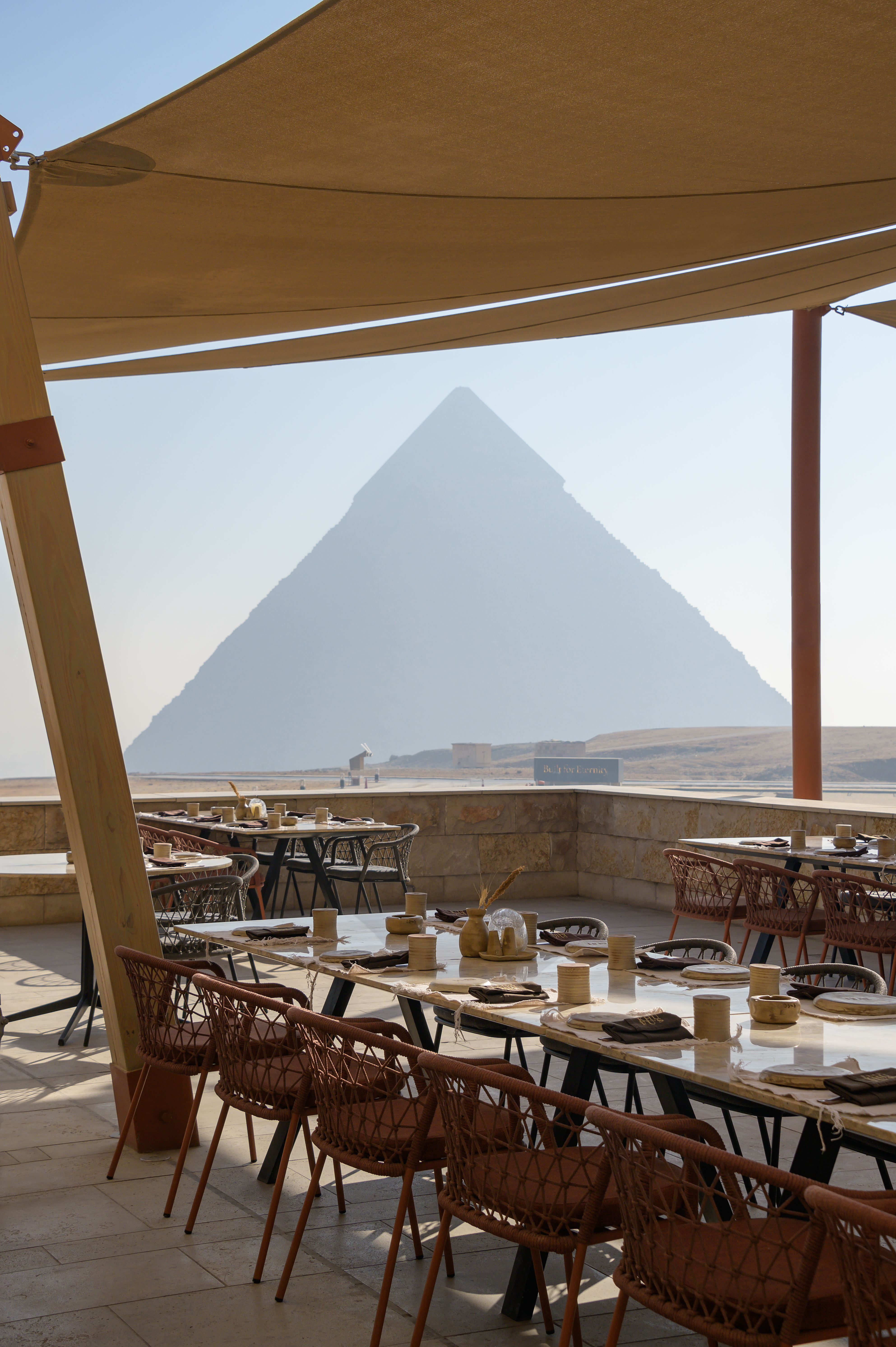 “We’re in front of the Pyramids, so the only option is to blend in,” Ghorab tells SceneHome. “The design isn’t making a statement because you can’t compete with them. No matter what you do, people won’t take their eyes off the Pyramids. Instead, we staged them and drew our energy from them, affirming that they’re our heroes.”
“We’re in front of the Pyramids, so the only option is to blend in,” Ghorab tells SceneHome. “The design isn’t making a statement because you can’t compete with them. No matter what you do, people won’t take their eyes off the Pyramids. Instead, we staged them and drew our energy from them, affirming that they’re our heroes.”
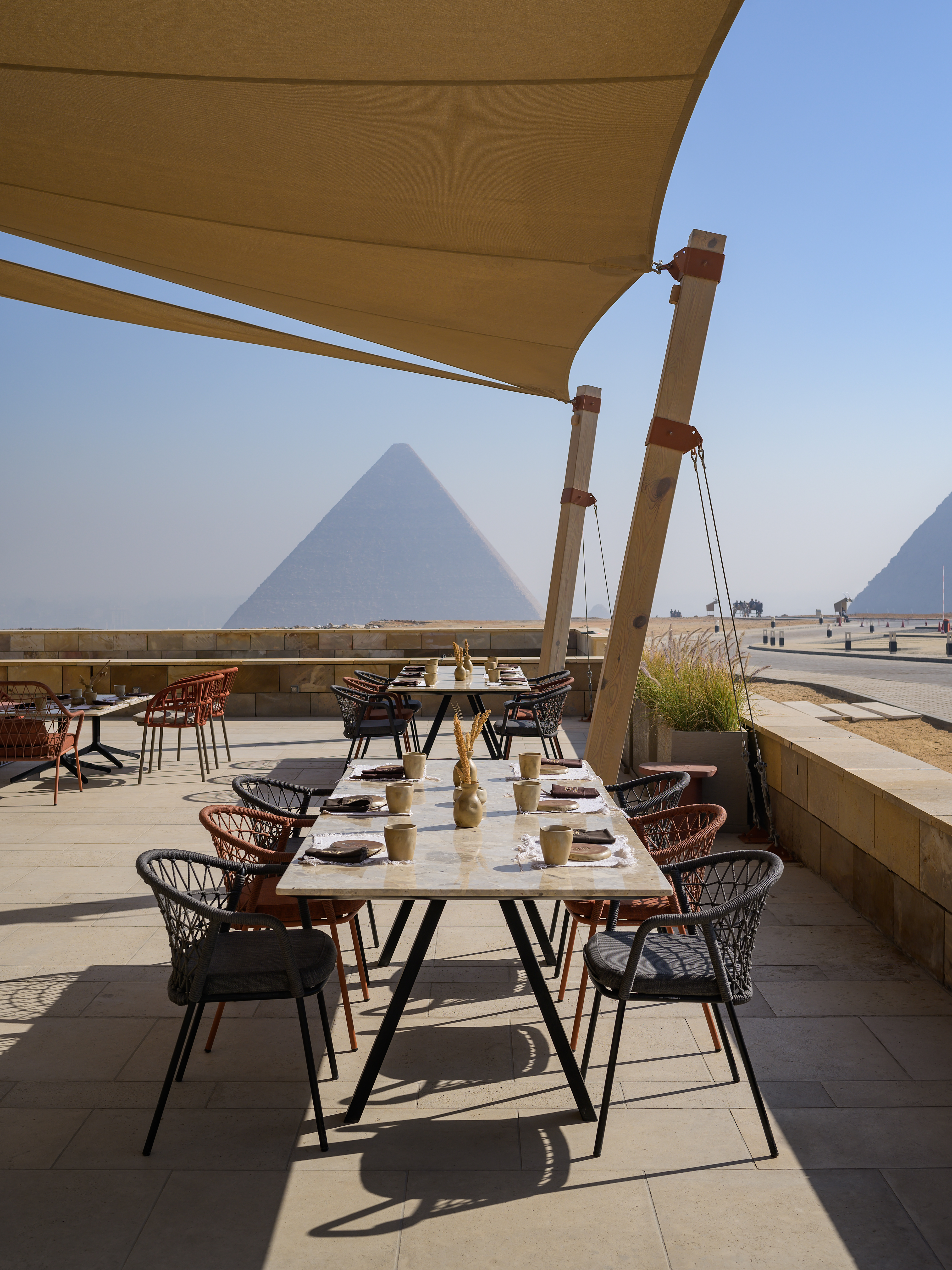 Ghorab’s design presented materials that had been used in ancient Egypt with a modern outlook. For example, sandstones were stacked on the kitchen wall as it was on the pyramids themselves. An earthy colour palette is set smoothly against natural materials throughout Khufu’s, from the front desk to the spacious outdoor seating area that boasts panoramic views of the pyramids. The interior is marked by a scratched wooden ceiling inspired by the ancient use and look of papyrus, setting a mesmerizingly soothing pattern. “When you enter, you’re surrounded by a camouflaged environment,” Ghorab explains. “The design is meant to be invisible, fading into the background to make you feel comfortable when you’re using it.”
Ghorab’s design presented materials that had been used in ancient Egypt with a modern outlook. For example, sandstones were stacked on the kitchen wall as it was on the pyramids themselves. An earthy colour palette is set smoothly against natural materials throughout Khufu’s, from the front desk to the spacious outdoor seating area that boasts panoramic views of the pyramids. The interior is marked by a scratched wooden ceiling inspired by the ancient use and look of papyrus, setting a mesmerizingly soothing pattern. “When you enter, you’re surrounded by a camouflaged environment,” Ghorab explains. “The design is meant to be invisible, fading into the background to make you feel comfortable when you’re using it.”
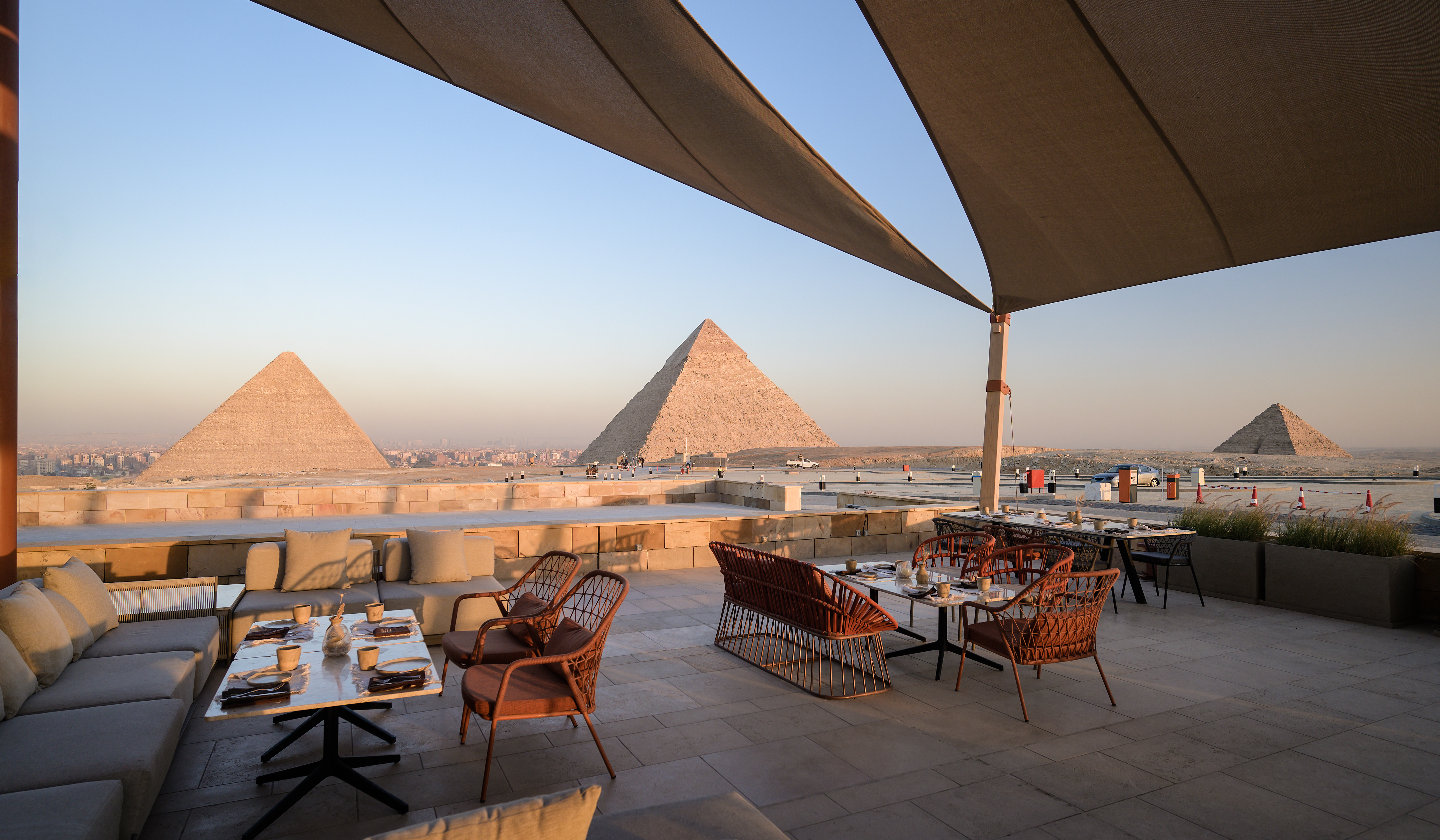 Proper furnishings, such as versatile chairs of pristine quality, ensured durability and made the design more sustainable. “It’s meant to be timeless so that there isn’t a need to change it in a decade. It doesn’t hit you in the face,” Ghorab says.
Proper furnishings, such as versatile chairs of pristine quality, ensured durability and made the design more sustainable. “It’s meant to be timeless so that there isn’t a need to change it in a decade. It doesn’t hit you in the face,” Ghorab says.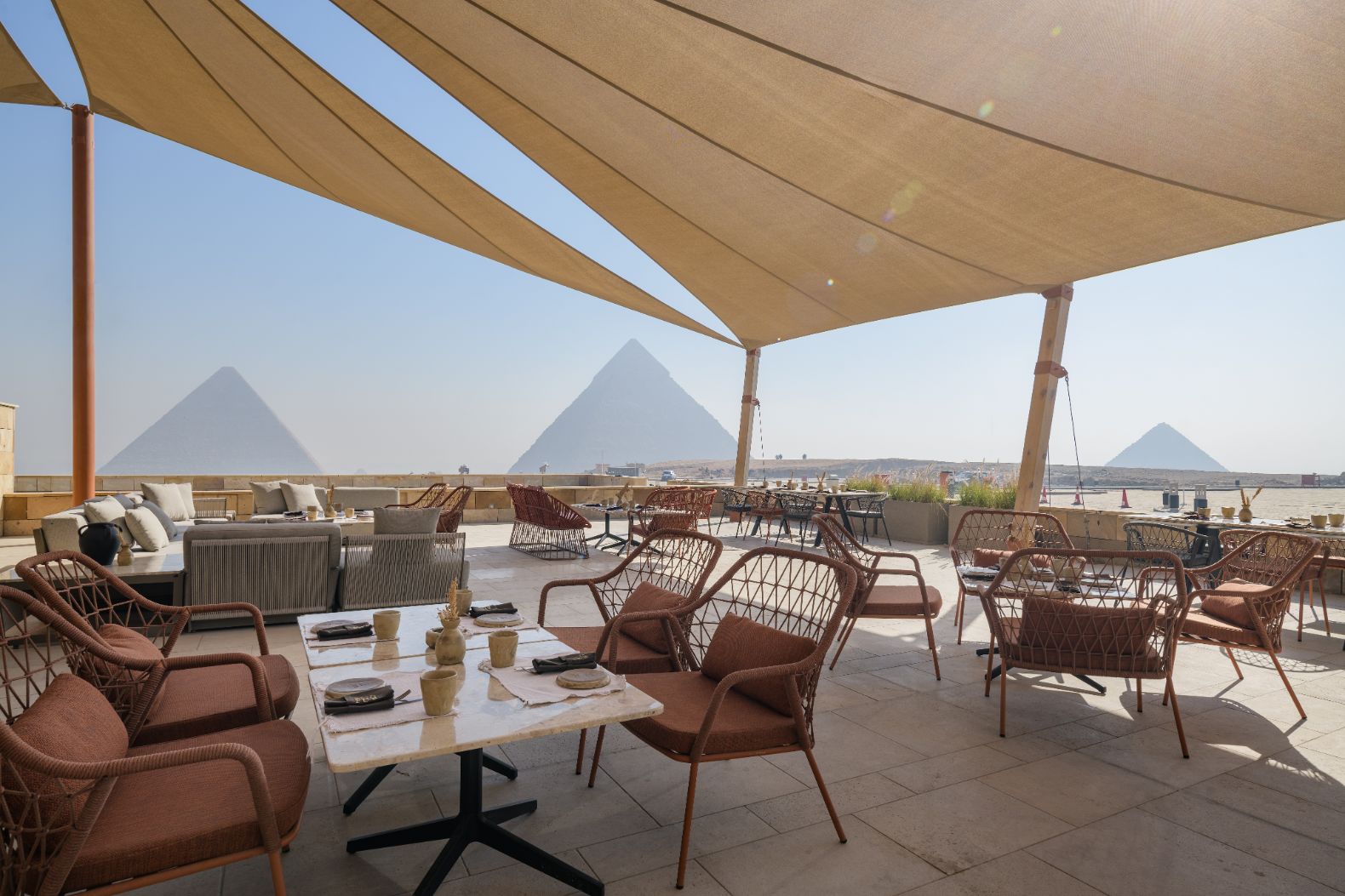 Contemporary Egyptian artworks by Alaa Abdelhamid draw inspiration from different eras. “We positioned them so that they don’t compete with the view,” Ghorab says. Decorations vary as you move through the space.When the pyramids are far from sight, these pieces are loud and clear, unafraid to demand your attention like the opening act of a popular rock concert. The closer you get to the view of the pyramids, the quieter everything becomes as the true stars of the show take centre stage. “Approaching such a historically and culturally significant site required a sensitive approach.”
Contemporary Egyptian artworks by Alaa Abdelhamid draw inspiration from different eras. “We positioned them so that they don’t compete with the view,” Ghorab says. Decorations vary as you move through the space.When the pyramids are far from sight, these pieces are loud and clear, unafraid to demand your attention like the opening act of a popular rock concert. The closer you get to the view of the pyramids, the quieter everything becomes as the true stars of the show take centre stage. “Approaching such a historically and culturally significant site required a sensitive approach.”
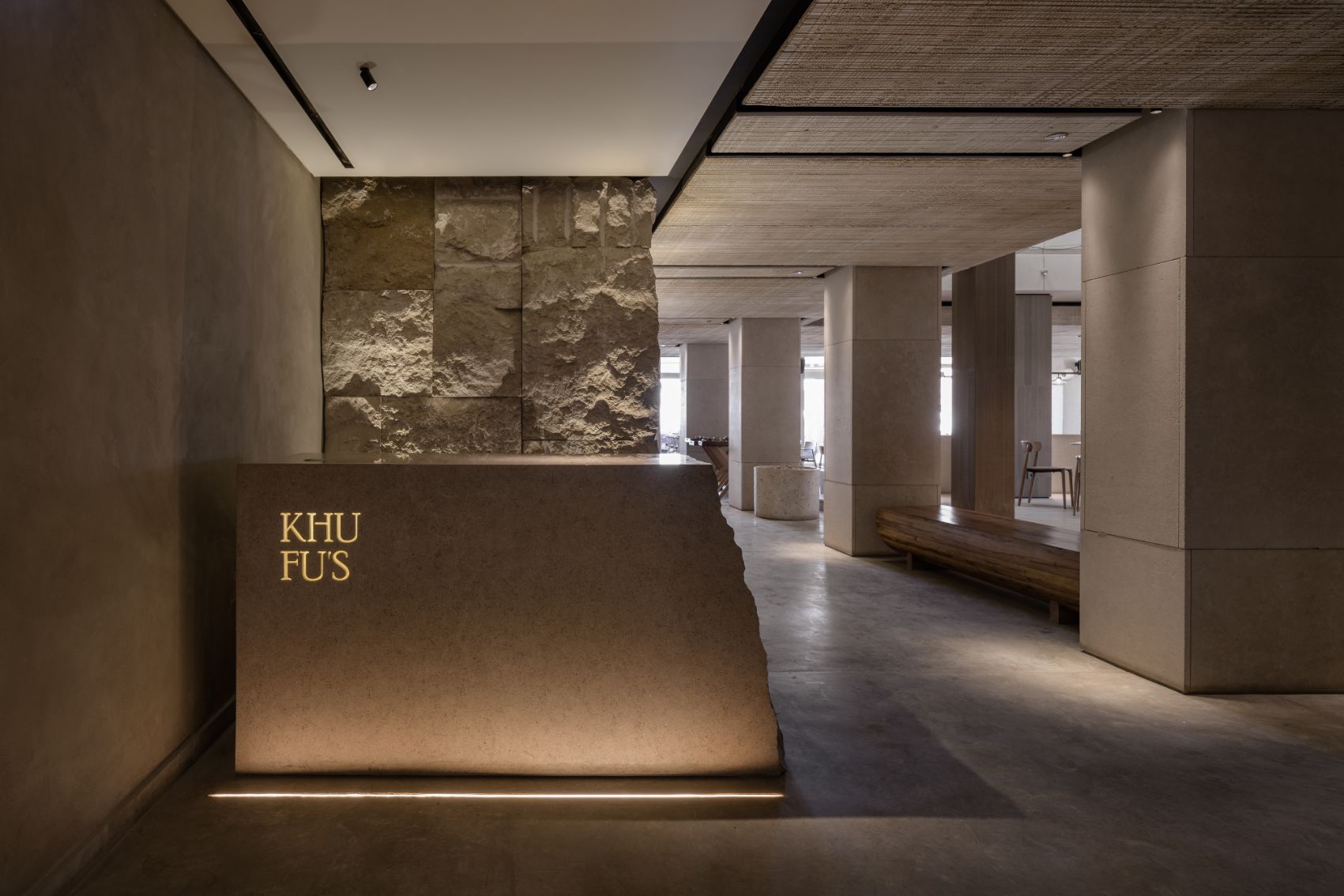 Khufu’s has a stone facade which Style Design brightened up using fabrics to provide shading outdoors. Triangular shapes cast shadows that fit with the surrounding scenery. There are plans to open a second storey later this year, where the views will get even more expansive. “The upper floor has an elevated window overlooking the desert, so we placed rocks and sands inside,” Ghorab shares. “The view is complemented with biophilia and a visual continuity of materials.”
Khufu’s has a stone facade which Style Design brightened up using fabrics to provide shading outdoors. Triangular shapes cast shadows that fit with the surrounding scenery. There are plans to open a second storey later this year, where the views will get even more expansive. “The upper floor has an elevated window overlooking the desert, so we placed rocks and sands inside,” Ghorab shares. “The view is complemented with biophilia and a visual continuity of materials.”
-4e8b5f64-7acd-4365-93b3-6ceb190588d1.jpg) Khufu’s is hosted within the King Khufu Center, a larger project that Style Design worked on. The three-storey building was constructed in the early 1960s and was renovated by Orascom Pyramids Entertainment, a subsidiary of Orascom Investment Holding. Among the challenges that its renovators faced was that many of the centere’s walls obstructed visitors’ views of the pyramids with closed-off spaces.
Khufu’s is hosted within the King Khufu Center, a larger project that Style Design worked on. The three-storey building was constructed in the early 1960s and was renovated by Orascom Pyramids Entertainment, a subsidiary of Orascom Investment Holding. Among the challenges that its renovators faced was that many of the centere’s walls obstructed visitors’ views of the pyramids with closed-off spaces.
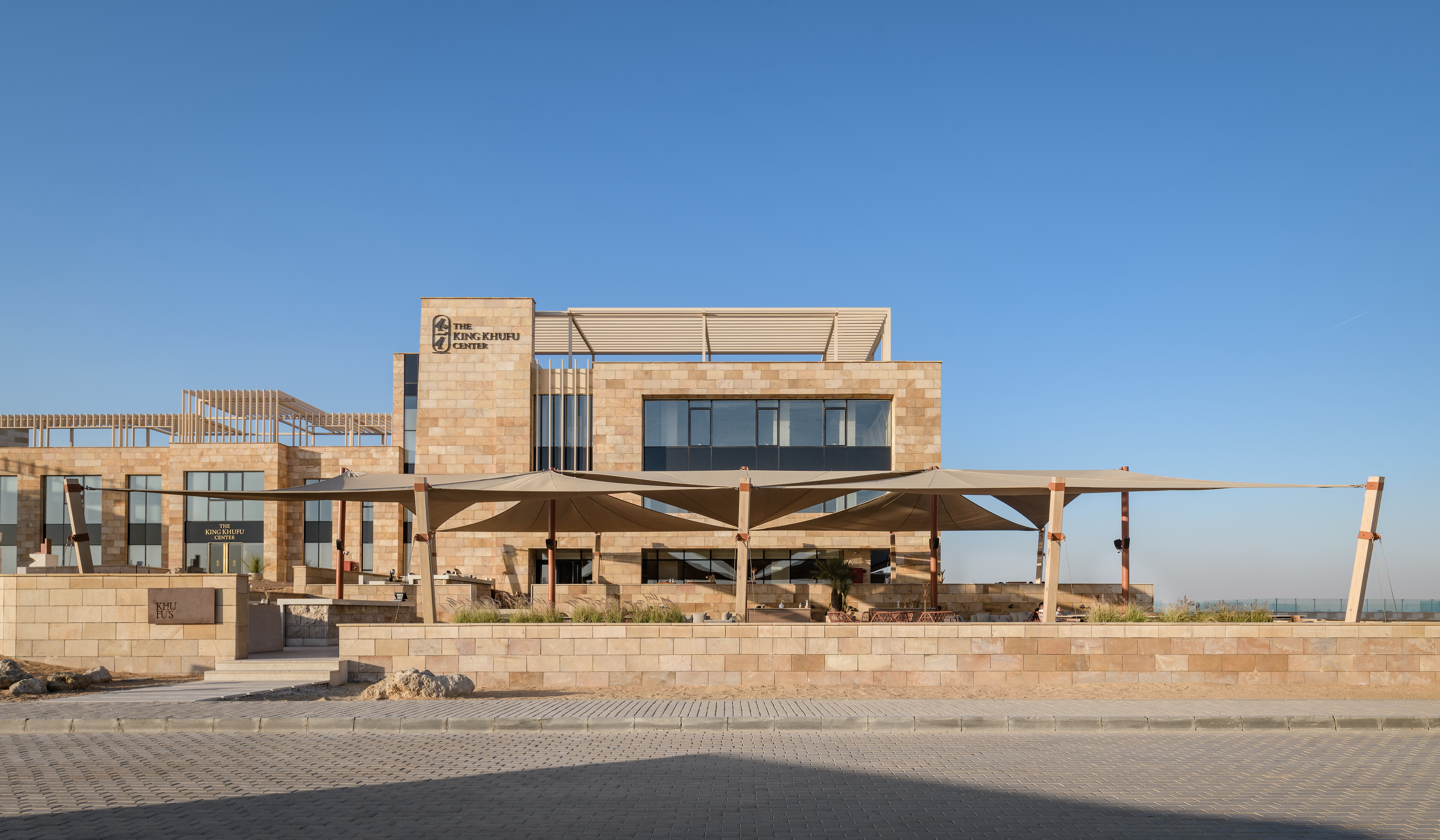 Ghorab led the renovative design, which set the framework for Khufu’s. Upon the opening of the restaurant, it acted as a realised dream for many Egyptians, including Naguib Sawiris, CEO of Orascom Investment Holding. “One of my dreams was to upgrade the tourism culinary experience at the Pyramids, from predictable fava beans and falafel to a memorable Egyptian feast,” Sawiris tells SceneHome. “Through Khufu’s, visitors will journey from our ancient civilization to the present by enjoying contemporary Egyptian cuisine with a twist.”
Ghorab led the renovative design, which set the framework for Khufu’s. Upon the opening of the restaurant, it acted as a realised dream for many Egyptians, including Naguib Sawiris, CEO of Orascom Investment Holding. “One of my dreams was to upgrade the tourism culinary experience at the Pyramids, from predictable fava beans and falafel to a memorable Egyptian feast,” Sawiris tells SceneHome. “Through Khufu’s, visitors will journey from our ancient civilization to the present by enjoying contemporary Egyptian cuisine with a twist.”
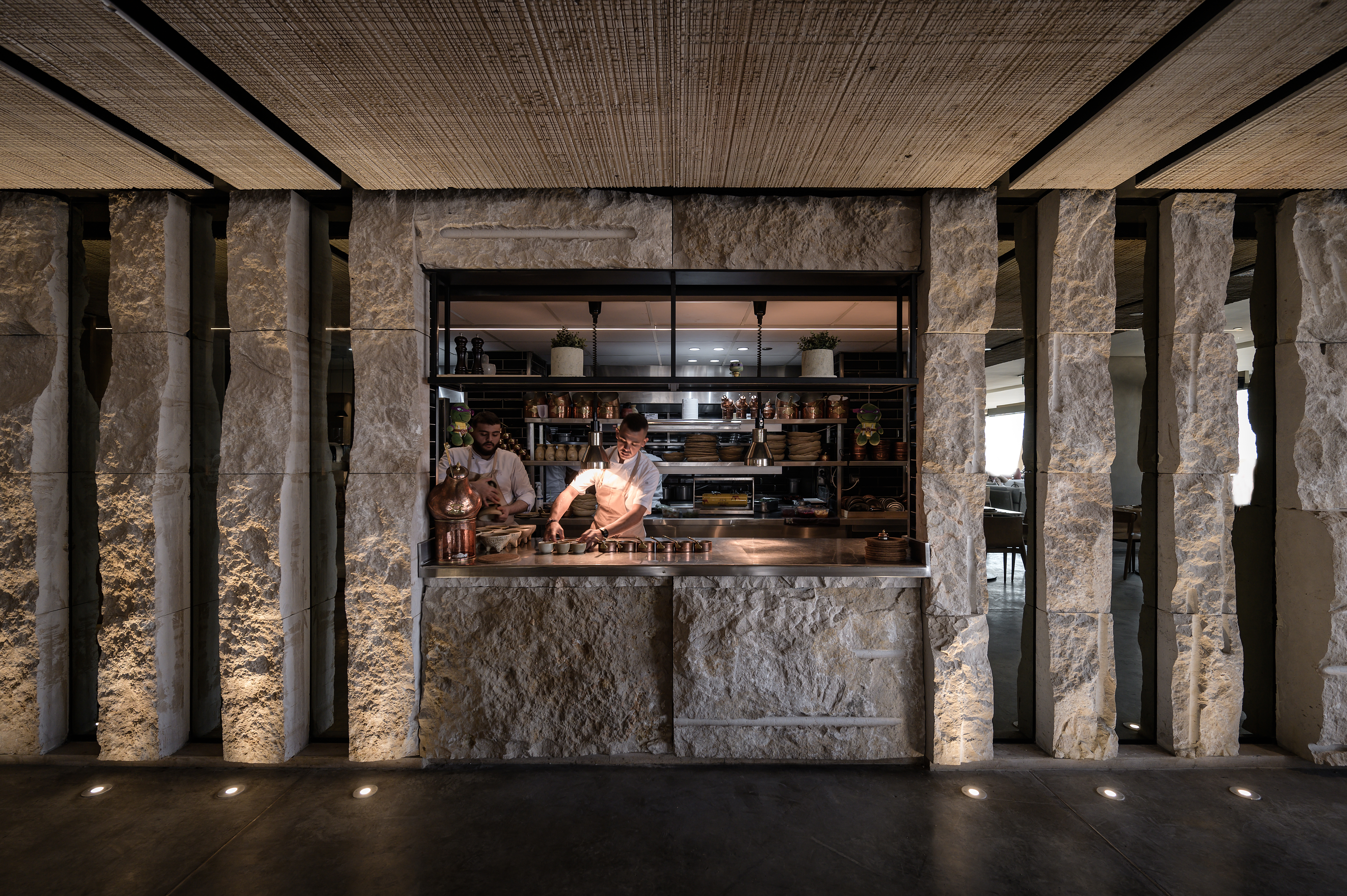 The ‘twist’ that Sawiris refers to comes courtesy of Giovanni Bolandrini, CEO of Pier 88 Group. “I’ve known Hisham for almost 10 years and our shared interest led us to collaborate on Khufu’s with a concept of bringing the past into the present, combining the rich historical and cultural heritage of the site with modernist design elements that are relevant to the era we’re living in now,” Bolandrini tells SceneHome.
The ‘twist’ that Sawiris refers to comes courtesy of Giovanni Bolandrini, CEO of Pier 88 Group. “I’ve known Hisham for almost 10 years and our shared interest led us to collaborate on Khufu’s with a concept of bringing the past into the present, combining the rich historical and cultural heritage of the site with modernist design elements that are relevant to the era we’re living in now,” Bolandrini tells SceneHome.
 Khufu’s reinterprets Egyptian food - including traditional dishes from Siwa and Upper Egypt - with contemporary cooking techniques. “For me, the design is the only thing that competes with the food,” Mostafa Seif, Executive Chef at Khufu’s, tells SceneHome. “The palace is easy on the eye, when you enter you feel transported. It’s contemporary but still has the timelessness of our forefathers.”
Khufu’s reinterprets Egyptian food - including traditional dishes from Siwa and Upper Egypt - with contemporary cooking techniques. “For me, the design is the only thing that competes with the food,” Mostafa Seif, Executive Chef at Khufu’s, tells SceneHome. “The palace is easy on the eye, when you enter you feel transported. It’s contemporary but still has the timelessness of our forefathers.”
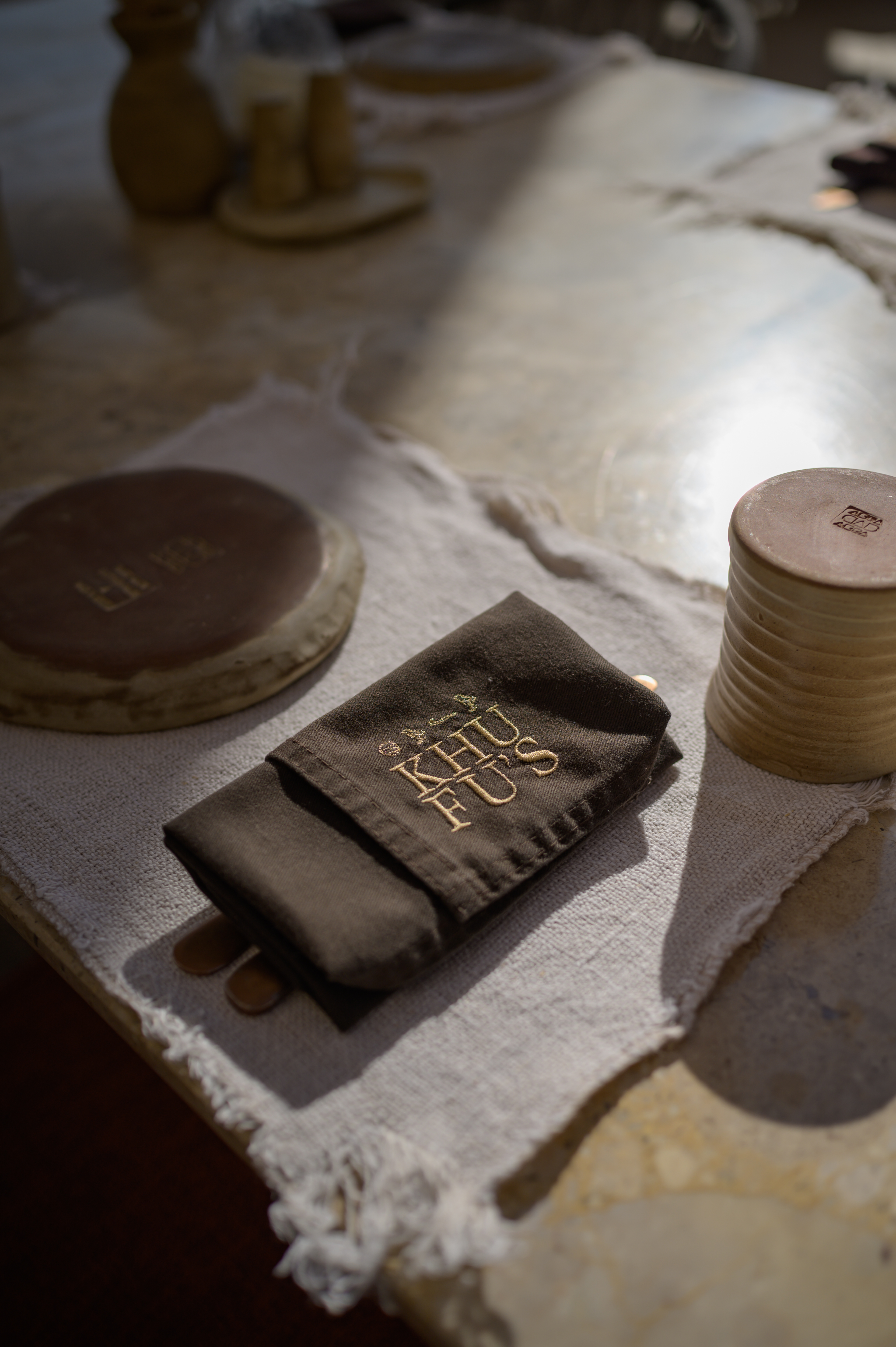 A key indicator of the restaurant’s success, whether it’s impacting tourism, expressing Egyptian modernity or upgrading culinary experience, is the alignment between the minds behind it and those experiencing it. Khufu’s presented a unique experience that immerses its guests in a truly Egyptian palette and design, compelling Egyptians from various walks of life to share their thoughts. Beloved Egyptian actress Nelly Karim, for example, says, “Khufu's is one of the best designs in any historical place in Egypt because it has our identity. The raw walls and simplicity of the unique design evoke the continuity of our great Egyptian culture.”
A key indicator of the restaurant’s success, whether it’s impacting tourism, expressing Egyptian modernity or upgrading culinary experience, is the alignment between the minds behind it and those experiencing it. Khufu’s presented a unique experience that immerses its guests in a truly Egyptian palette and design, compelling Egyptians from various walks of life to share their thoughts. Beloved Egyptian actress Nelly Karim, for example, says, “Khufu's is one of the best designs in any historical place in Egypt because it has our identity. The raw walls and simplicity of the unique design evoke the continuity of our great Egyptian culture.”
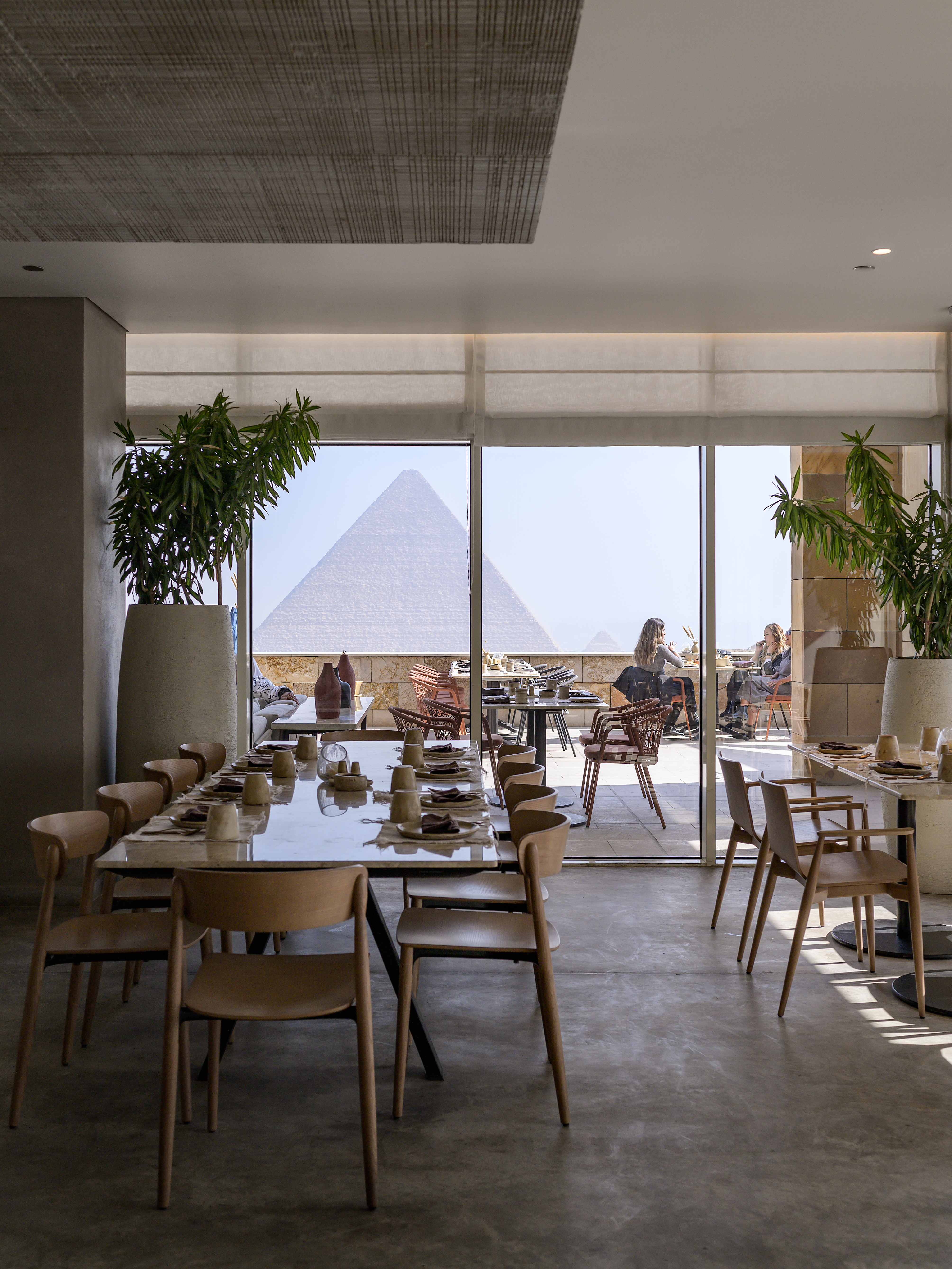 “Tasting an innovative Egyptian menu cooked with such passion and served with elegance in the presence of the last standing wonder of the ancient world is an incredible experience,” Khadiga Loutfy, a renowned Egyptian tour guide, recalls. “The design is simple but elegant and matches the environment.”
“Tasting an innovative Egyptian menu cooked with such passion and served with elegance in the presence of the last standing wonder of the ancient world is an incredible experience,” Khadiga Loutfy, a renowned Egyptian tour guide, recalls. “The design is simple but elegant and matches the environment.”
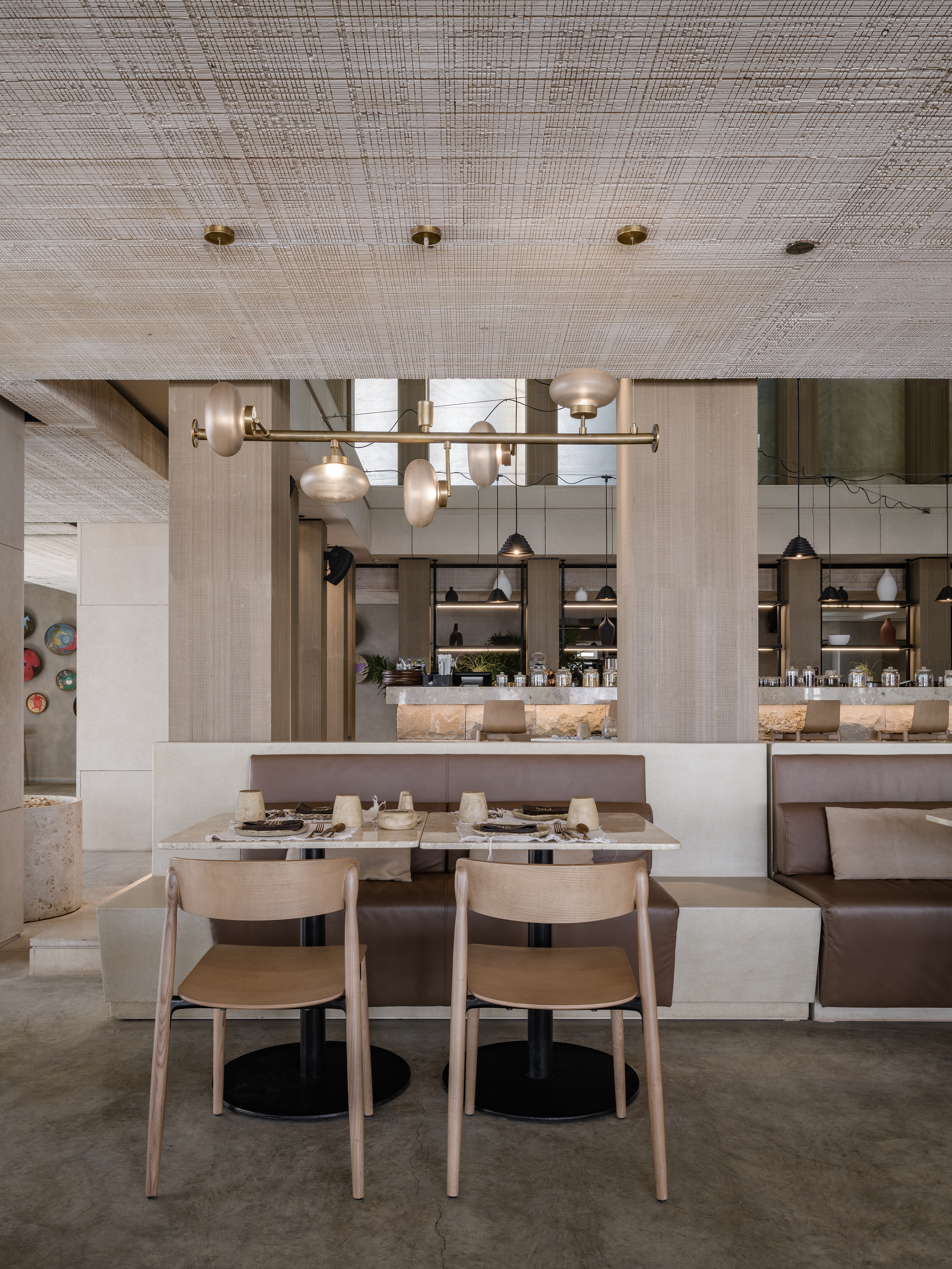 London-based jazz vocalist Ahmed Harfoush had a similar experience. “Upon entering Khufu’s, you become part of the Giza Pyramids world. The space has amazing architecture and is user friendly, with a superb view of the pyramids.”
London-based jazz vocalist Ahmed Harfoush had a similar experience. “Upon entering Khufu’s, you become part of the Giza Pyramids world. The space has amazing architecture and is user friendly, with a superb view of the pyramids.”
 Khufu’s has drawn many reactions, and Ghorab kept an eye out for those immersed in the world of design. During the first edition of Cairo Design Week, Khufu’s hosted renowned designers and jurors from the Cairo Design Award. “I measured our success from what was said, and Mohamed Fares wrote something that really touched me,” Ghorab says. “It showed that he understood and grasped our approach.”
Khufu’s has drawn many reactions, and Ghorab kept an eye out for those immersed in the world of design. During the first edition of Cairo Design Week, Khufu’s hosted renowned designers and jurors from the Cairo Design Award. “I measured our success from what was said, and Mohamed Fares wrote something that really touched me,” Ghorab says. “It showed that he understood and grasped our approach.”
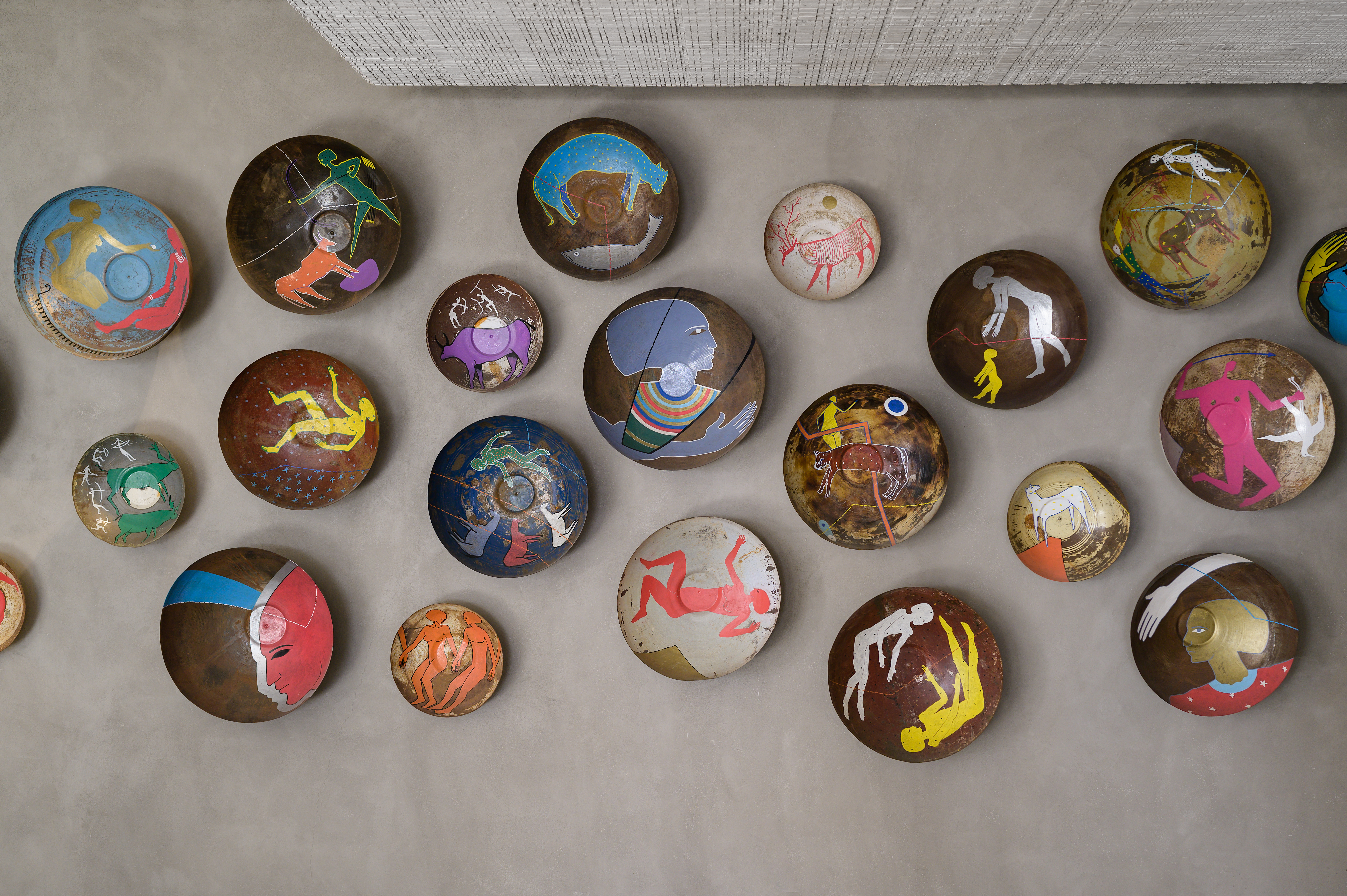 Mohamed Fares, founder of MFares & Associates, writes on Khufu’s design: “I always believe that the absence of the designer’s signature in this historical and treasured site is an art by itself. We’ve been longing for such an experience for years.” His life-long partner at Alchemy Design Studio, Armenian Egyptian designer Karim Mekhtigian, adds, “This isn’t just another restaurant, it’s one we can consider as a benchmark of Egyptian modernity. Silent and conscious design.”
Mohamed Fares, founder of MFares & Associates, writes on Khufu’s design: “I always believe that the absence of the designer’s signature in this historical and treasured site is an art by itself. We’ve been longing for such an experience for years.” His life-long partner at Alchemy Design Studio, Armenian Egyptian designer Karim Mekhtigian, adds, “This isn’t just another restaurant, it’s one we can consider as a benchmark of Egyptian modernity. Silent and conscious design.”
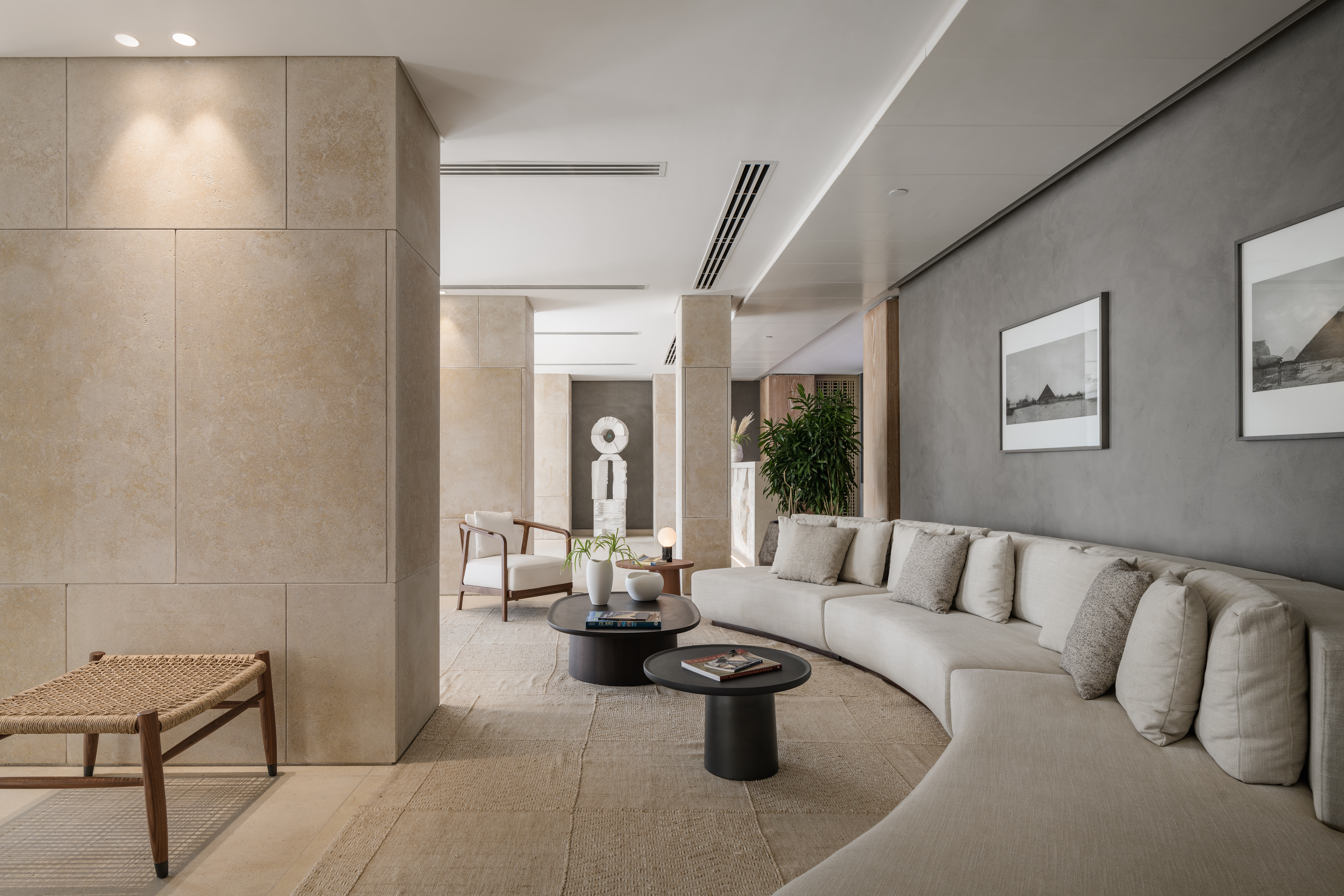 The interior walls and columns showcased a mix of rough stones arranged in an organic manner, which caught the eye of renowned architectural photographer, Nour El Refai, as he captured the space. “Using textures and earthy tones, the design of Khufu’s respects its historical context,” El Refai says. “It’s not trying to be catchy, instead it complements and frames the spectacular view of the Pyramids.”
The interior walls and columns showcased a mix of rough stones arranged in an organic manner, which caught the eye of renowned architectural photographer, Nour El Refai, as he captured the space. “Using textures and earthy tones, the design of Khufu’s respects its historical context,” El Refai says. “It’s not trying to be catchy, instead it complements and frames the spectacular view of the Pyramids.”
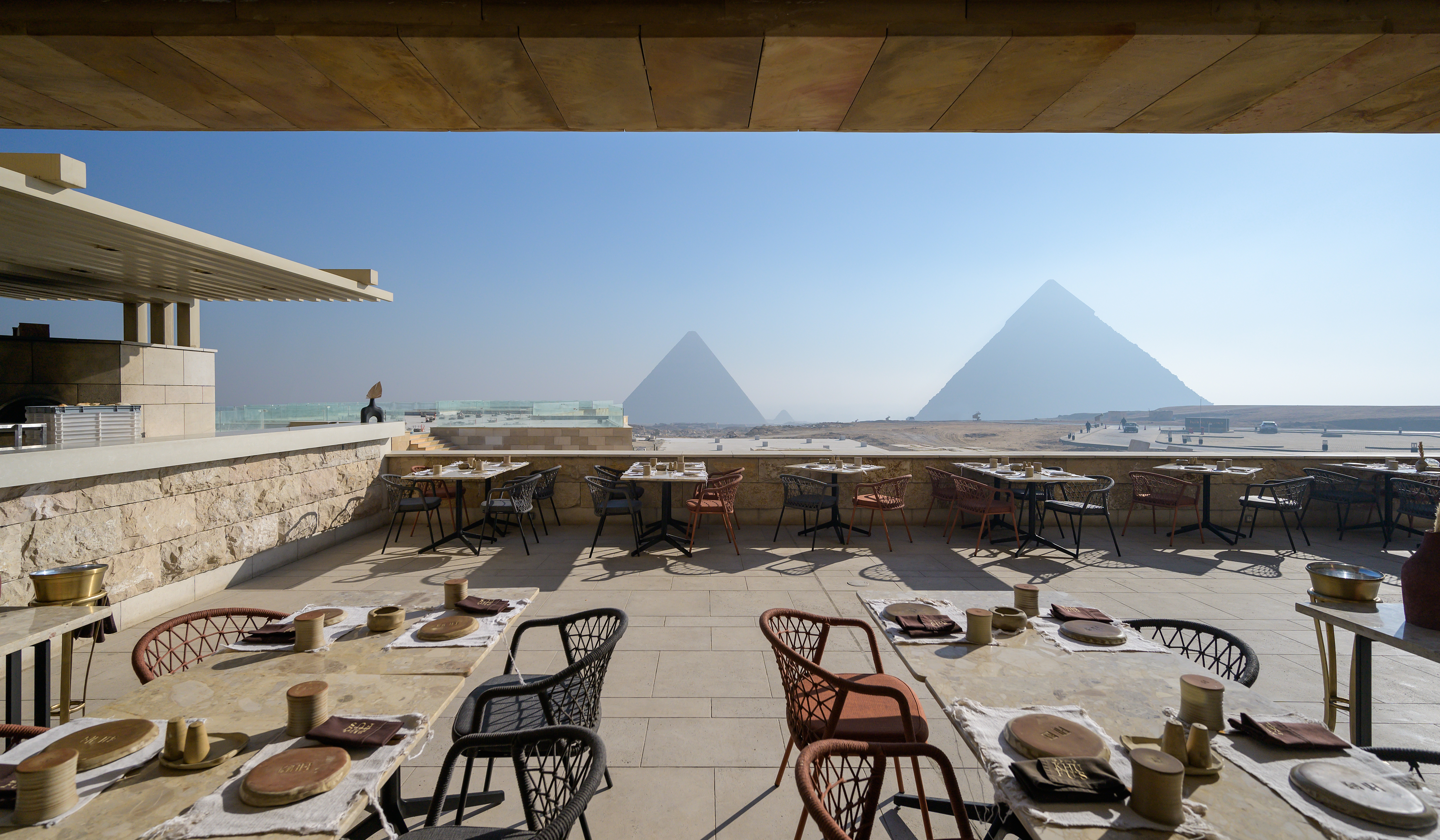 With an ‘invisible’ design approach, the space ended up feeling natural, intuitive and comfortable for its users. “Egyptian culture has changed drastically and those visiting should get the opportunity to learn and be part of what’s happening today,” Ghorab adds. “It’s every architect’s dream to take part in such an exceptional opportunity.”
With an ‘invisible’ design approach, the space ended up feeling natural, intuitive and comfortable for its users. “Egyptian culture has changed drastically and those visiting should get the opportunity to learn and be part of what’s happening today,” Ghorab adds. “It’s every architect’s dream to take part in such an exceptional opportunity.”
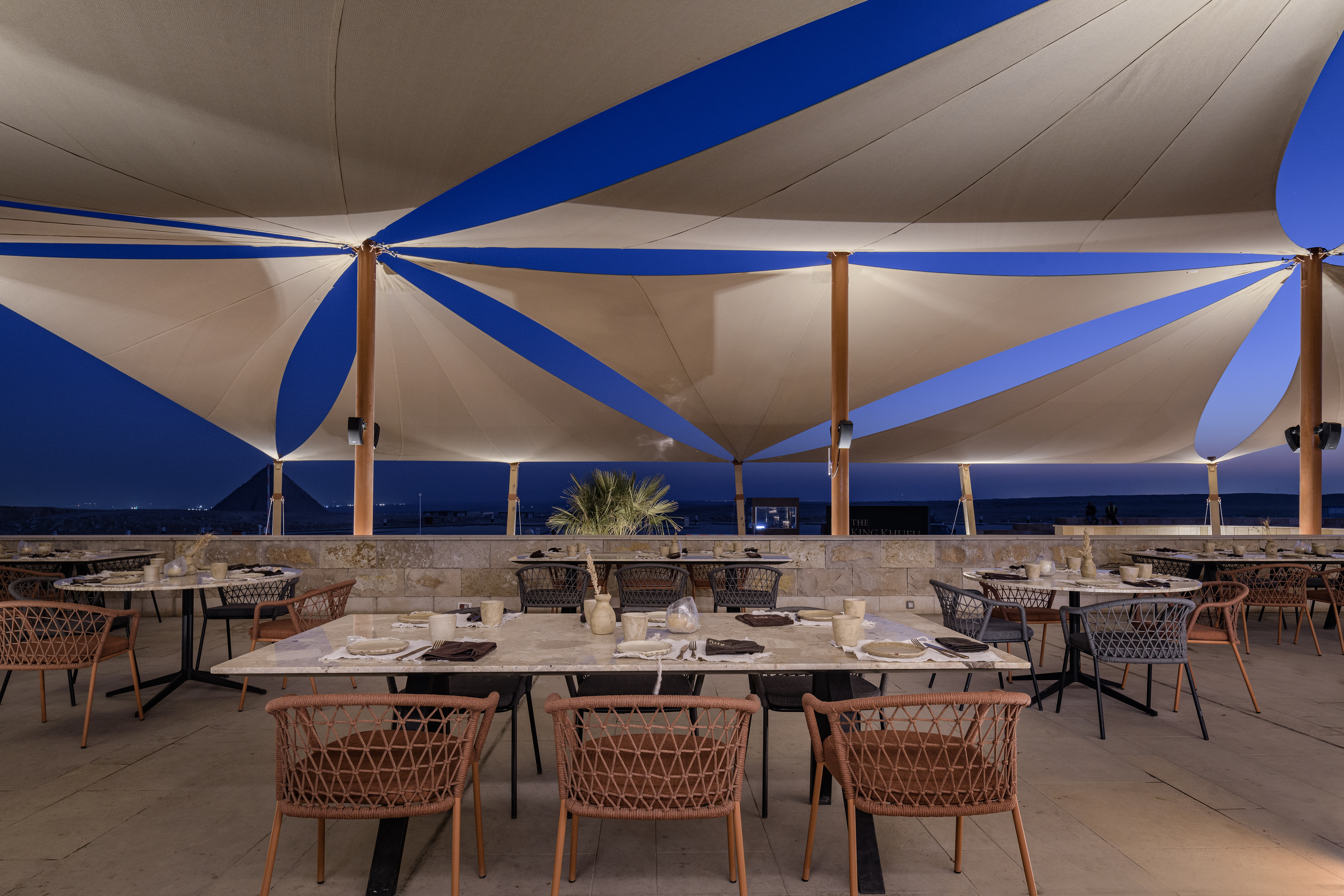 Photography Credit: Nour El Refai
Photography Credit: Nour El Refai
- Previous Article The Enduring Charm of Jeddah’s Old Town of Al Balad
- Next Article This Swiss-Egyptian Photographer Views Europe Through Mosque Windows




